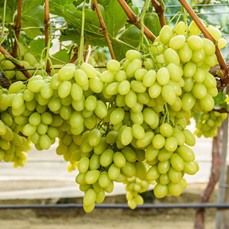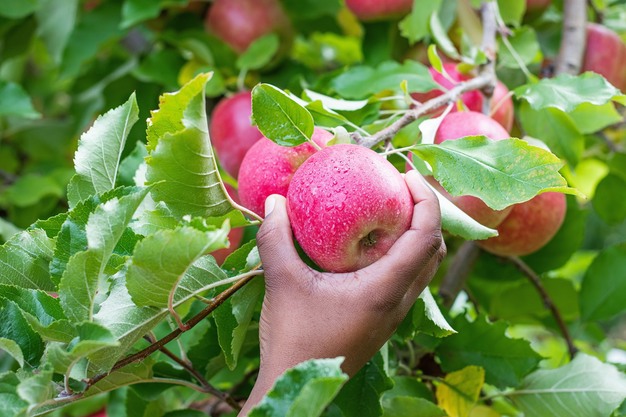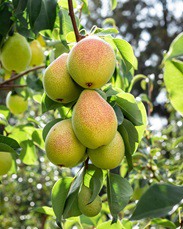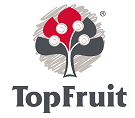A varietal management company has a front-row seat on the upheavals and the settled periods in commercial fruit genetics.
“Trend-wise, we were waiting for something new in grapes. The new generation ARRA™ varieties delivered precisely what we had been waiting for. Great tasting grapes that easily adapt to any climate, that consumers and growers love,” says AJ Jansen van Vuuren from TopFruit.
Since he started as table grape category manager, Jansen Van Vuuren shares, his first port of call has been to cultivate relationships with retailers and South African exporters. Getting a variety on a retailer’s list goes a long way in establishing a successful variety.
His colleague in pome fruit Corné Grundlingh concurs; as a varietal company, they reach out 50:50 to exporters/retailers on the one side and growers on the other. South African growers trust that the varieties offered by TopFruit will, by default, be grower-friendly and in demand. Consistency within a grape variety is very difficult to achieve in South Africa where, he points out, they are grown in various climate zones such as a desert, a subtropical zone and in a Mediterranean climate.
Consistency within a grape variety is very difficult to achieve in South Africa where, he points out, they are grown in various climate zones such as a desert, a subtropical zone and in a Mediterranean climate.
Right: ARRA Honey Pop™
“Therefore, with new genetics, the focus is definitely on climate adaptability. Currently, there are opportunities in the market for a premium early red seedless and a late red seedless variety. We also needed a replacement for an ultra-early white seedless and have just commercialised ARRA Honey Pop™ in that window.
He adds: “Many growers, believe it or not, have approached us to establish semi-commercial blocks as a replacement for Crimson due to its shortcomings such as the fact that Crimson needs a lot of Ethephon to colour and that production and grower friendliness is inconsistent from one year to the next.
He remarks that consumers generally do not distinguish between grape varieties. In fact, the plethora of cultivars confuses them, and the only constants that guide consumers in their purchase journey seem to be good appearance, sweetness and a crunchy texture.
Africa overtakes Europe on Pink Lady volumes exported
On the other hand, the public loves Pink Lady® in the 101 countries where the brand has assumed an almost unassailable position. TopFruit holds the license from Apple and Pear Australia Limited (APAL), the owner of the trademark, for Africa, South Africa and the Indian Ocean Islands. The Pink Lady® brand is well-known for its assurance of quality.

Pink Lady®
Corné Grundlingh, TopFruit’s pome fruit category manager, remarks that roughly 40% of South Africa’s Pink Lady apples are still destined for the UK. Interestingly, Africa has overtaken Europe as the second largest receiver of Pink Lady® apples, taking a fifth of the crop.
“Apple exporters have realised that they need to send more to the Far East,” she says. “Of course Fujis and Galas mostly go to Asia, in terms of Pink Lady® they have long believed that Pink Lady® doesn’t have the taste profile for Asia but it’s being developed and fast becoming an important market for Pink Lady.”
The most sold apple cultivars from their catalogue are the high colour mutations: Bingo Gala (with only a tree and no production royalty of the locally derived mutation), the RDS/Joya® Cripps Red mutation (and final cultivar in the apple harvest calendar) and Lady in Red / Pink Lady®.
“We will not advise growers to plant the varieties that are marketed under the brands of Pink Lady or Joya if the grower doesn’t support and believe in the concept of brands,” she notes.
TP15-41 Eden Gold Among pears, TopFruit’s pome fruit technical manager Dihan Blom singles out TP15-41/ Eden Gold™ (right). It is an end-of-early season, end Jan, early Feb pear, a hybrid that he calls a new type of pear and the first semi-commercial block will be planted this year.
Among pears, TopFruit’s pome fruit technical manager Dihan Blom singles out TP15-41/ Eden Gold™ (right). It is an end-of-early season, end Jan, early Feb pear, a hybrid that he calls a new type of pear and the first semi-commercial block will be planted this year.
“It is a pear you can eat straight off the tree. It gets its sweetness from its European parents, the crunchiness from its Asian parents with a taste like an apple - it’s a whole new profile.” Because it’s a product from the Ben Dor breeding program it’s acclimatised to hotter climates.
Blom adds that from 2026, Europe is looking for 40 containers of 60mm plus of fruit. Greenyard Fresh in Italy is planting a lot and looking for counter-seasonal product. Smaller pears are marketed as snacking fruit.
“It falls in the same window as Williams, most of which are used for canning. It would be an easy replacement for Williams which isn’t working very well for canning.”
While the colour is not really for Asian markets, they believe the taste definitely is, and given some market education, there could be a market gap as well.
Their flagship stone fruit cultivars are from BQ Genetics (known as Bradford varieties), AC Fruit Breeding (Star Fruits) and Provedo (among growers there’s a notable interest in cherries).
“IP is still a fairly new concept in the tree nut industry”, Jansen van Vuuren remarks, “but as a protein substitute to meat in plant-based diets, nut consumption will pick up worldwide. With an increased awareness of the superfood status of tree nuts and a growing consumer demand, growers are bound to buy into the concept of IP to sustain high levels of productivity, which is only guaranteed by investing in new, licensed genetics”. For more information:
For more information:
TopFruit
Tel: +27 21 874 1033
Email: aj@topfruit.co.za or corneg@topfruit.co.za
https: www.topfruit.co.za
